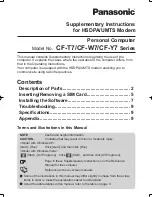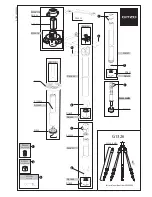
Remote Control Basics
R&S
®
NRPxxA(N)
137
User Manual 1177.6017.02 ─ 05
The HiSLIP data is sent to the device using the "fire and forget" method with immediate
return. Opposed to VXI-11, where each operation is blocked until a VXI-11 device
handshake returns. Thus, a successful return of a VISA operation such as
viWrite()
does not guarantee that the sensor has finished (or even started) executing the
requested command. It just indicates that the command has been delivered to the
TCP/IP buffers.
For more information see also the application note at:
http://www.rohde-schwarz.com/appnote/1MA208
11.1.2.4
Socket Communication
An alternative way for remote control of the software is to establish a simple TCP/IP
connection to the device using the standard network drivers of your operating system.
The so-called "socket" on Linux, "winsock" on Windows. The socket communication,
also referred to as "raw Ethernet communication", does not necessarily require a VISA
installation on the remote controller side.
Socket connections are established on a specially defined port. The socket address is
a combination of the IP address or hostname of the sensor and the number of the port
configured for remote control. The power sensors use port number 5025 for this pur-
pose.
11.2
SCPI Command Structure
SCPI commands - messages - are used for remote control. Commands that are not
taken from the SCPI standard follow the SCPI syntax rules. The power sensor sup-
ports the SCPI version 1999. The SCPI standard is based on standard IEEE 488.2 and
aims at the standardization of device-specific commands, error handling and the status
registers.
SCPI commands consist of a so-called header and, usually, one or more parameters.
The header and the parameters are separated by a "white space" (ASCII code 0 to 9,
11 to 32 decimal, e.g. blank). The headers can consist of several mnemonics (key-
words). Queries are formed by appending a question mark directly to the header.
The commands can be either device-specific or device-independent (common com-
mands). Common and device-specific commands differ in their syntax.
11.2.1
Syntax for Common Commands
Common (=device-independent) commands consist of a header preceded by an aster-
isk (*) and possibly one or more parameters.
Examples:
SCPI Command Structure
















































